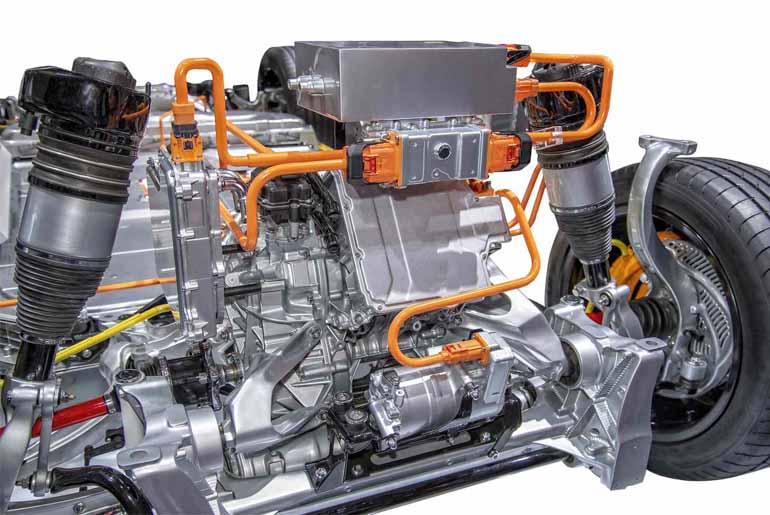Electric vehicles (EVs) represent a fundamental shift in the way vehicles are powered and designed. Unlike internal combustion engine (ICE) vehicles, which rely on complex mechanical systems to transfer power from the engine to the wheels, EVs are powered by electric motors that produce torque in a fundamentally different way. This has significant implications for the role of transmissions in EVs. While traditional vehicles require multi-gear transmissions to operate efficiently, the simplicity of electric motors has led to different transmission designs for EVs, raising questions about their necessity, function, and potential advancements.
The Function of Transmissions in Traditional Vehicles
In a traditional ICE vehicle, the engine operates efficiently within a specific range of revolutions per minute (RPM). To keep the engine in this optimal RPM range across different speeds and loads, a multi-gear transmission is necessary. Lower gears provide greater torque for acceleration or climbing hills, while higher gears allow the engine to operate efficiently at higher speeds. Without a transmission, an ICE vehicle would struggle to deliver the necessary power across various driving conditions, resulting in poor performance, inefficiency, and excessive wear on the engine.
How Electric Motors Differ
Electric motors differ fundamentally from ICE engines in the way they deliver torque and power. While an ICE engine’s power output varies significantly with RPM, an electric motor can deliver its maximum torque almost instantly from a standstill. This eliminates the need for the complex gearing required to maintain optimal power delivery. Electric motors also have a much wider range of efficient operation, meaning they can accelerate smoothly and reach high speeds without the need for multiple gears.
Single-Speed Transmissions in Electric Vehicles
Because of these differences, most EVs are equipped with single-speed transmissions. The simplicity of a single-speed transmission is one of the key advantages of electric drivetrains. Without the need to shift gears, EVs offer a smoother driving experience, with instant acceleration and fewer moving parts, resulting in lower maintenance requirements and higher reliability.
The single-speed transmission in an EV is designed to balance the torque and power output of the electric motor across a wide range of speeds. At lower speeds, the motor’s inherent torque provides the necessary acceleration, while at higher speeds, the motor continues to deliver power efficiently without needing to change gears. For most driving scenarios, this setup is more than sufficient, offering a seamless and quiet driving experience that has become a hallmark of electric vehicles.
Do Electric Vehicles Need Multi-Speed Transmissions?
While single-speed transmissions are the norm in EVs, the question arises whether multi-speed transmissions might offer benefits under certain conditions. Multi-speed transmissions can improve the efficiency of electric motors at very high speeds or under heavy loads, such as when towing or driving in mountainous terrain. By enabling the motor to operate within a narrower, more efficient range, a multi-speed transmission could theoretically increase overall efficiency and range.
Some high-performance EVs, such as the Porsche Taycan, use a two-speed transmission to optimize performance. The first gear is designed for acceleration, delivering more torque for rapid starts, while the second gear allows for higher top speeds and improved efficiency at highway speeds. This approach allows the Taycan to achieve impressive acceleration while still maintaining efficiency during long-distance driving.
Advantages and Disadvantages of Multi-Speed Transmissions in EVs
Advantages:
– Improved Efficiency at High Speeds: By optimizing motor performance across a wider range of speeds, multi-speed transmissions can improve the efficiency of electric motors, particularly at high speeds or under heavy loads.
– Enhanced Performance: Multi-speed transmissions can provide additional torque for high-performance EVs, enabling faster acceleration and better responsiveness.
– Greater Range for Certain Use Cases: For drivers who frequently drive long distances at highway speeds or engage in heavy towing, a multi-speed transmission could potentially extend the vehicle’s range.
Disadvantages:
– Increased Complexity: One of the primary advantages of electric drivetrains is their simplicity. Introducing a multi-speed transmission adds complexity to the vehicle, which could increase maintenance requirements and reduce reliability.
– Weight and Cost: Multi-speed transmissions add weight to the vehicle, which can reduce efficiency and range. They also increase production costs, which could make EVs less affordable.
– Limited Real-World Benefits: For most drivers, the benefits of a multi-speed transmission may be minimal. The vast majority of EVs perform adequately with single-speed transmissions, making multi-speed transmissions an unnecessary complication in most cases.
Future of Transmissions in Electric Vehicles
As EV technology continues to evolve, the role of transmissions in electric vehicles is likely to change. Advances in electric motor design, battery technology, and power electronics could further reduce the need for multi-speed transmissions, making single-speed setups even more efficient and capable. Additionally, emerging technologies such as in-wheel motors, which place the electric motor directly in the wheel hub, could eliminate the need for transmissions entirely.
However, for certain applications—such as high-performance sports cars, heavy-duty trucks, or specialized commercial vehicles—multi-speed transmissions may continue to play a role. As manufacturers experiment with different configurations, we may see a greater variety of transmission designs tailored to specific use cases.
Conclusion
The role of transmissions in electric vehicles is fundamentally different from their role in traditional ICE vehicles. While multi-speed transmissions are essential for optimizing the performance of ICE engines, the unique characteristics of electric motors allow most EVs to operate efficiently with simple single-speed transmissions. This simplicity is one of the key advantages of electric drivetrains, contributing to their smooth operation, lower maintenance requirements, and increased reliability.
However, for certain high-performance or specialized applications, multi-speed transmissions may offer benefits in terms of efficiency and performance. As EV technology continues to advance, the industry will likely continue to explore the balance between simplicity and performance, leading to innovative transmission designs that meet the diverse needs of electric vehicle drivers.

